To optimize your trading prowess with the Relative Strength Index (RSI), mastering these ten essential tips can be transformative.
From tweaking RSI settings for tailored precision to integrating it with complementary indicators, the possibilities are vast.
Each tip holds the potential to refine your trading acumen and elevate your success in the market.
So, are you ready to unlock the full potential of your trading strategies with these expert insights?
RSI Indicator Settings and Adjustments
When adjusting the RSI indicator settings, consider tailoring the period and levels to align with your trading style and market conditions for optimal performance.
RSI period adjustment is essential for fine-tuning RSI sensitivity; short-term traders typically use a 9-period RSI, while longer-term traders may prefer a 25-period RSI.
Customizing RSI levels can enhance performance during different market conditions, such as setting overbought and oversold levels to 80 and 20 during high volatility.
Experimenting with parameters allows for the modification of RSI settings to cater to varying trading strategies.
Accessing RSI settings for visual customization of RSI is convenient through the 'List of Indicators' tab or 'Insert – Indicators' menu, enabling quick adjustments for improved readability and analysis.
Identifying RSI Signals for Trading
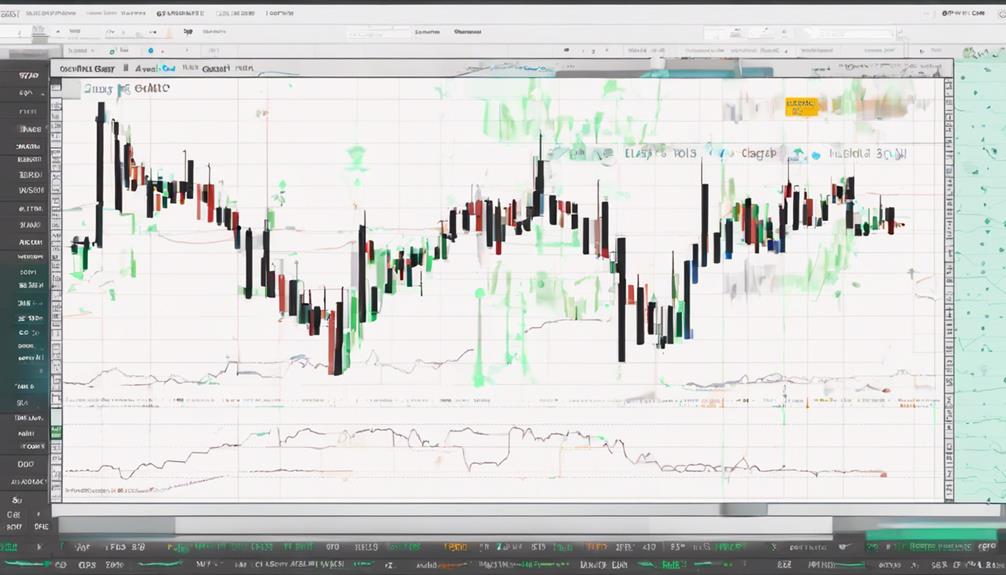
To effectively capitalize on trading opportunities using the RSI indicator, mastering the identification of key RSI signals is imperative.
When trading with RSI, keep an eye out for overbought and oversold conditions, marked by RSI levels above 70 and below 30, respectively.
Look for RSI crossovers at these levels as they can signify potential entry or exit points for trades.
Additionally, pay attention to bullish and bearish divergences between price action and RSI to anticipate possible reversals or downturns in the market.
Utilizing RSI Trendlines Effectively
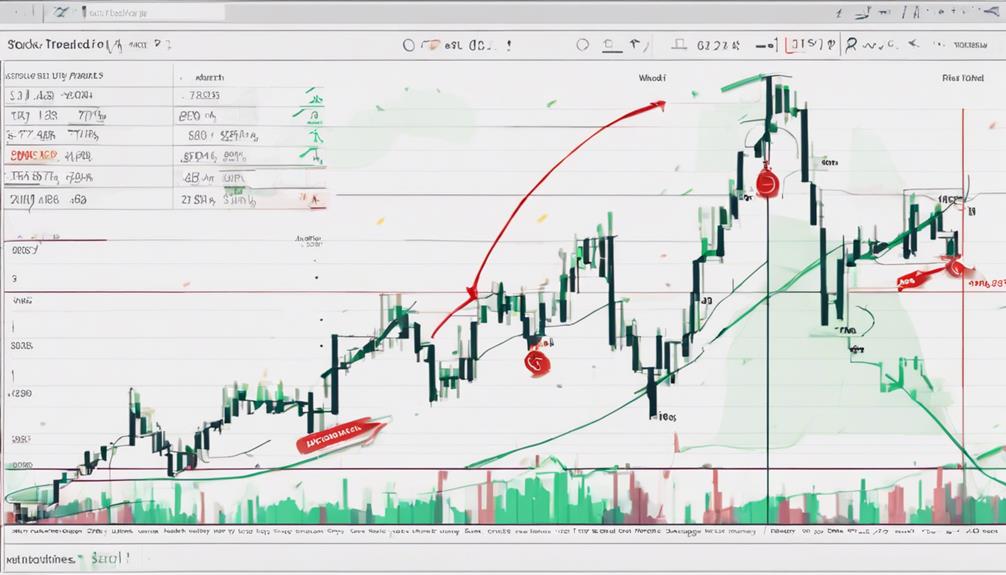
Drawing RSI trendlines enables traders to visually assess trend strength by connecting consecutive highs or lows on the indicator. These trendlines play a crucial role in identifying trendline breaks, which can signal potential trend reversals or confirm existing trends.
By utilizing RSI trendlines effectively, traders can visualize momentum shifts, aiding in making informed trading decisions. Validating RSI trendline breaks with price action can significantly enhance the accuracy of trend predictions.
RSI trendlines are versatile tools that can be applied across different timeframes for comprehensive trend analysis. Leveraging these trendlines empowers traders to better understand market dynamics and anticipate potential price movements, ultimately leading to more informed trading strategies.
Incorporating RSI With Chart Patterns
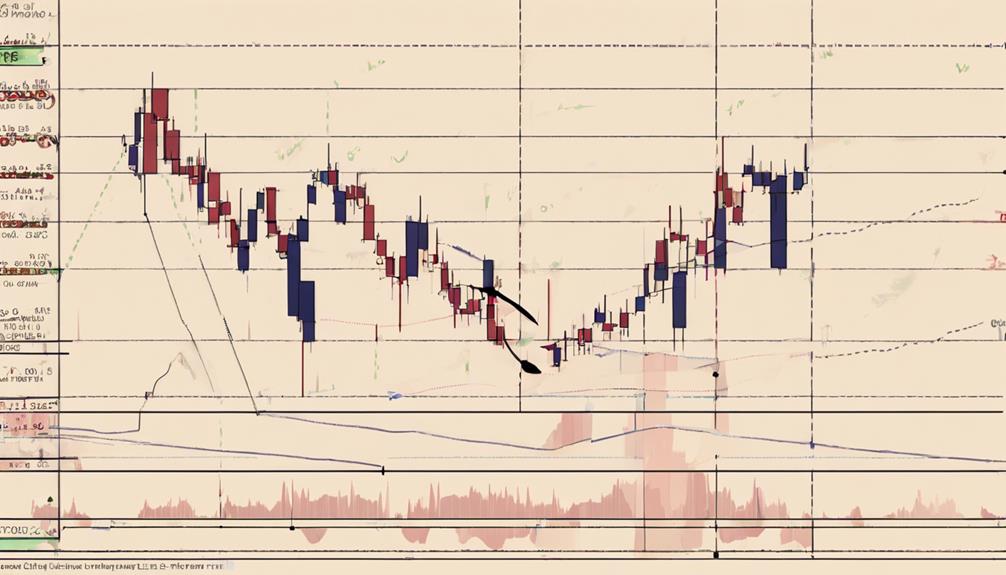
When combining RSI with chart patterns, you can gain valuable insights into potential market movements. Patterns like triangles and head and shoulders can be powerful when confirmed by RSI signals.
This integration can provide traders with enhanced decision-making capabilities and improve the effectiveness of their trading strategies.
RSI and Trendlines
Connecting trendlines with RSI on price charts enhances pattern recognition and aids in validating potential price reversals for more precise trading decisions. When incorporating RSI with trendlines, consider the following:
- Confirmation of Chart Patterns: Trendlines can help confirm RSI signals, improving pattern recognition.
- Trend Strength Analysis: Trendlines connecting RSI highs or lows indicate the strength of a trend and potential changes.
- Trade Entry and Exit Points: Utilizing RSI trendlines can enhance trade entry and exit decisions, especially during breakouts or reversals.
RSI and Triangles
Incorporating RSI with triangle chart patterns enhances traders' ability to confirm breakouts and anticipate price movements effectively. When RSI aligns with triangle boundaries, it can signal potential price continuation or reversal points.
By combining RSI signals with triangle patterns, traders can make more informed trading decisions based on the momentum and strength of the breakout. RSI helps validate the validity of triangle breakouts by indicating momentum in the breakout direction.
Triangles not only offer visual cues for potential price volatility but also provide a quantitative aspect when RSI measures momentum during these patterns. This integration of RSI with triangles adds a layer of confirmation and insight into trading strategies, aiding traders in interpreting market dynamics more accurately.
Leveraging RSI Divergence for Trading
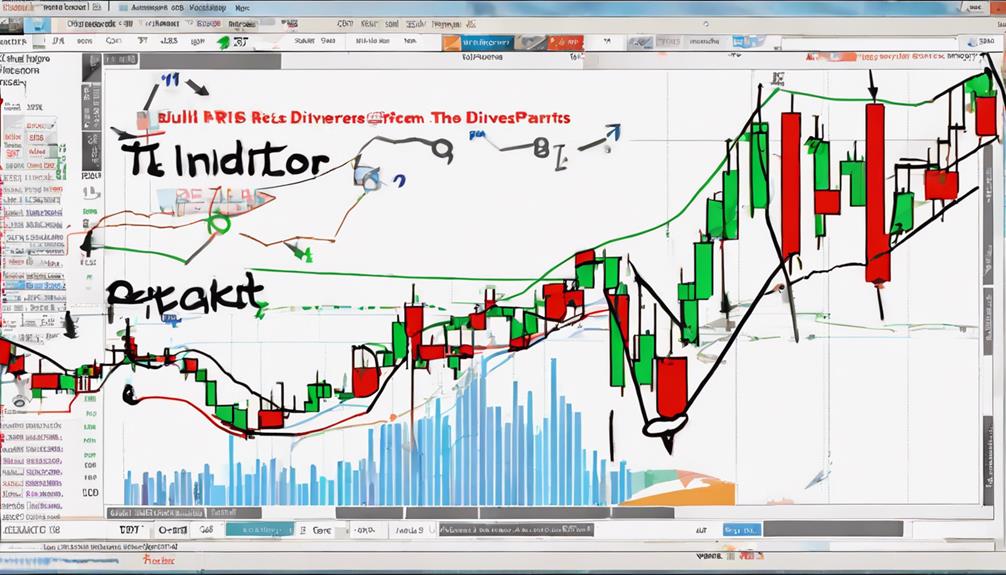
Leveraging RSI divergence in your trading strategy can enhance your ability to anticipate market reversals and make informed decisions. When incorporating RSI divergence into your trading approach, consider the following:
- Identifying Divergence Types: Recognize bullish and bearish divergence patterns to forecast potential market shifts accurately.
- Utilizing Early Warning Signals: RSI divergence can provide timely indications of upcoming price changes, allowing you to act proactively.
- Enhancing Trade Confirmations: By combining RSI divergence with other technical indicators, you can strengthen trade signals and improve the quality of your trading decisions.
Enhancing Trading With RSI and RVI
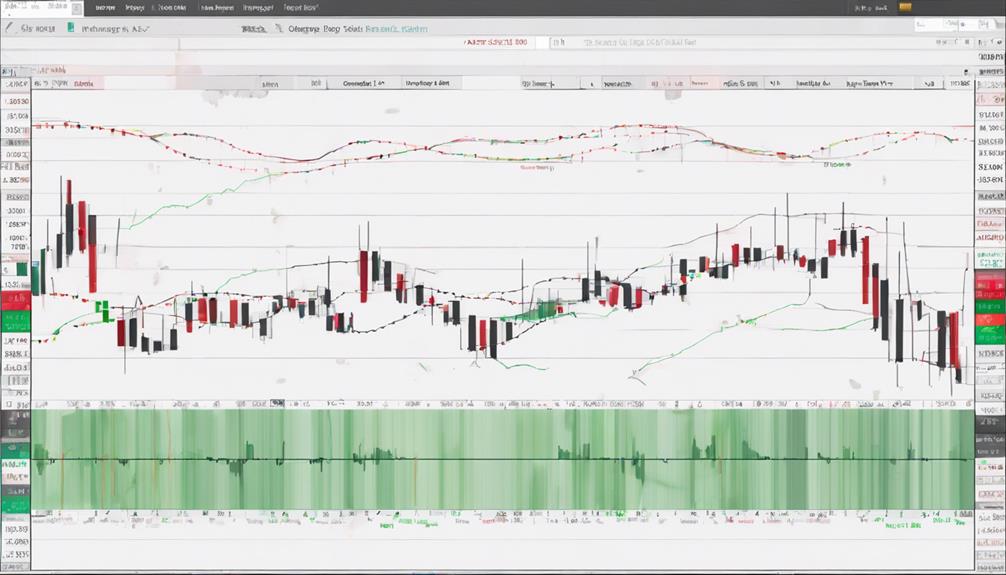
Enhancing your trading strategy with both RSI and RVI allows for a comprehensive analysis of price momentum and volatility dynamics. The Relative Volatility Index (RVI) focuses on market volatility, measuring the standard deviation of price changes to assess volatility levels.
By combining RSI and RVI, traders can gain a deeper understanding of both momentum and volatility factors in the market. This integration helps in identifying potential trend reversals and confirming trading signals.
Understanding how RVI complements RSI enhances trading decisions by providing a more holistic view of the market conditions. Incorporating RVI into your analysis can help you make more informed decisions based on a broader evaluation of price dynamics and volatility levels.
Integrating RSI Strategy With MACD
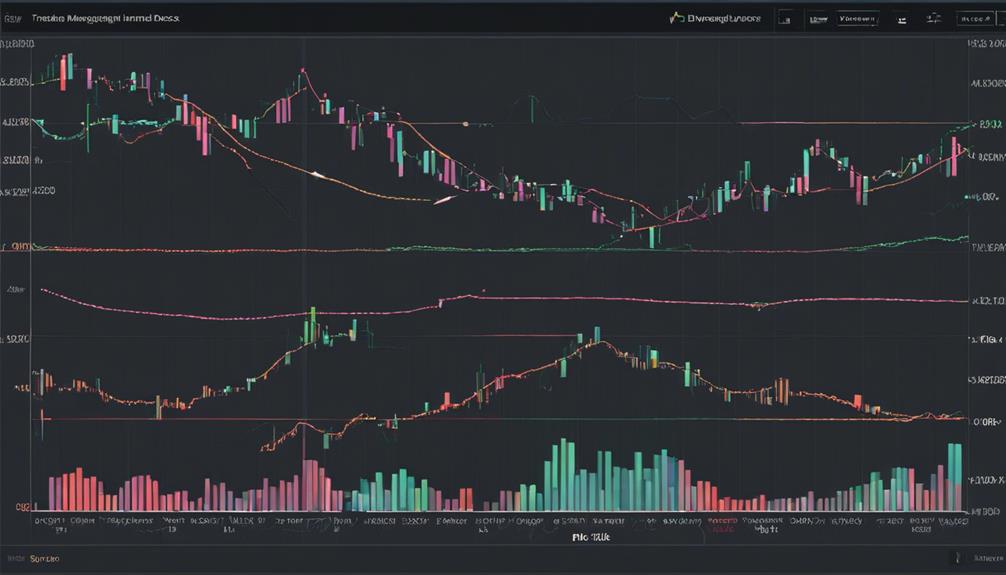
Integrating the RSI strategy with MACD enhances your ability to analyze market trends effectively through a combination of momentum and trend confirmation indicators. When combining RSI and MACD, you can:
- Receive more robust trading signals for informed decisions.
- Gain insights into market trends by confirming momentum and trend strength.
- Identify potential market reversals or continuations through convergence or divergence between RSI and MACD.
Maximizing Trading With RSI and Bollinger Bands
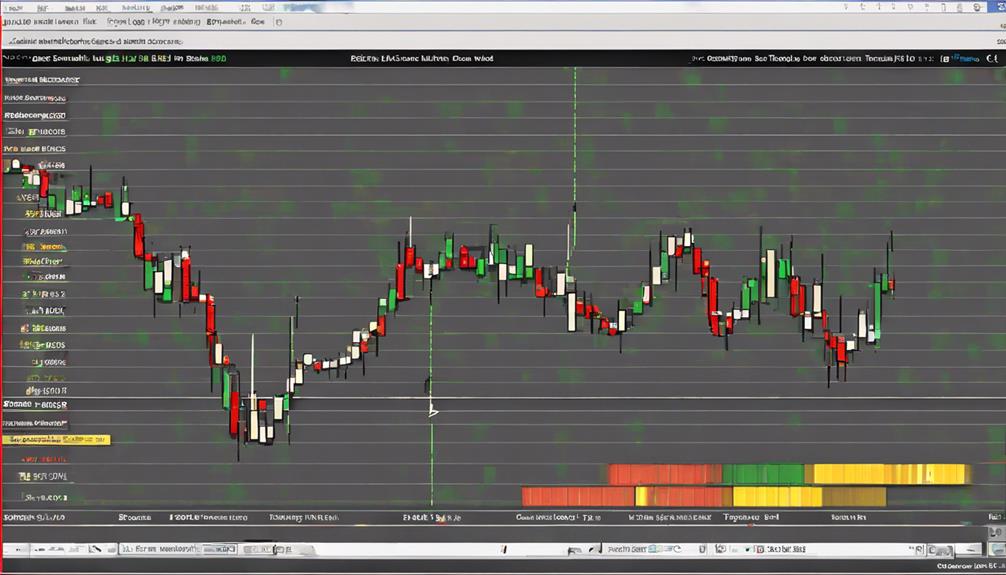
When it comes to maximizing trading with RSI and Bollinger Bands, understanding how these indicators work together is crucial for your success.
By combining RSI and Bollinger Bands, you can create a more robust trading strategy that takes into account both price volatility and overbought or oversold conditions.
This synergy between RSI and Bollinger Bands can enhance your trading decisions and provide a clearer picture of market dynamics.
RSI and Bollinger Synergy
Combining RSI with Bollinger Bands amplifies trading signals and enhances decision-making for traders seeking optimal entry and exit points. This synergy leverages RSI's ability to identify overbought/oversold conditions with Bollinger Bands' indication of volatility, providing a comprehensive view of market dynamics. When RSI confirms signals from Bollinger Bands, it adds a layer of confirmation that strengthens the trade setup, increasing the likelihood of successful trades. The accuracy of entry and exit points is significantly enhanced when these two indicators work together, improving risk management strategies and overall decision-making processes in trading.
- Enhanced Confirmation: RSI confirming Bollinger Bands signals.
- Improved Entry and Exit Points: Accuracy in determining optimal trade points.
- Better Risk Management: Strengthened strategies for managing trading risks.
Combining Indicators for Success
To maximize trading efficiency with RSI and Bollinger Bands, a strategic combination of indicators can be leveraged for enhanced decision-making and signal validation. By combining RSI, which indicates momentum, with Bollinger Bands, which show volatility, traders can better confirm signals and reduce false ones.
When RSI validates a signal from Bollinger Bands, it boosts the reliability of the trade setup, helping identify strong trends and potential reversals. This amalgamation not only enhances accuracy in trading decisions but also provides a more comprehensive analysis of market conditions.
Utilizing the strengths of RSI and Bollinger Bands in tandem allows for a more robust approach to trading, increasing the likelihood of successful outcomes.
Advanced Strategies: RSI + Stochastic + MA
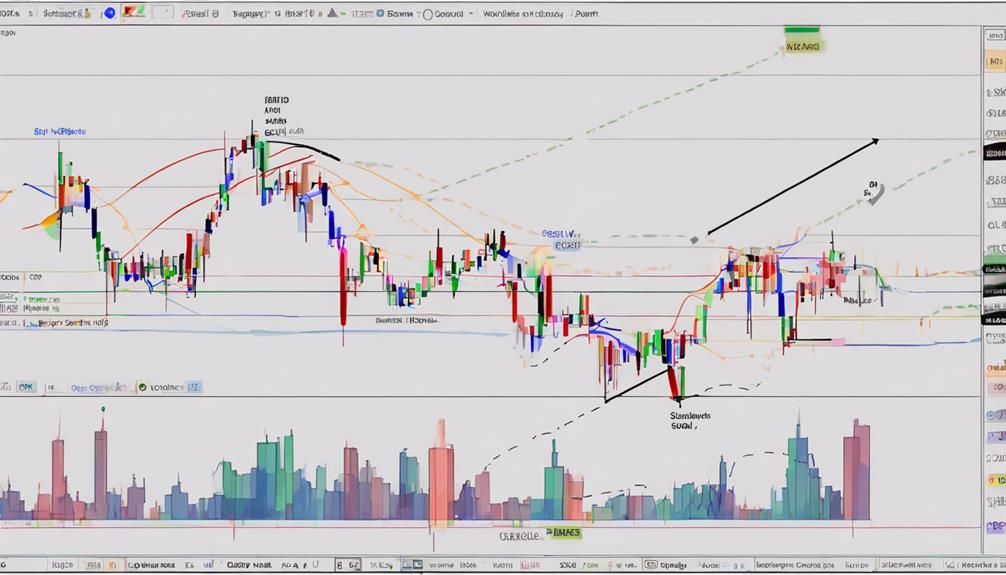
The integration of RSI, Stochastic oscillator, and Moving Average (MA) in trading strategies offers a multifaceted approach to analyzing market dynamics effectively. When combined, these indicators provide a comprehensive view of market conditions, aiding traders in making well-informed decisions.
Here are some key points to consider:
- RSI identifies overbought/oversold conditions.
- Stochastic confirms momentum.
- MA indicates trend direction.
How Can RSI Divergence Enhance Trading Strategies Using RSI?
When trading with RSI divergence, traders can use this powerful indicator to spot potential trend reversals and confirm buy or sell signals. By analyzing the divergence between price and the RSI indicator, traders can enhance their trading strategies and make more informed decisions in the market.
Day Trading Tactics With RSI
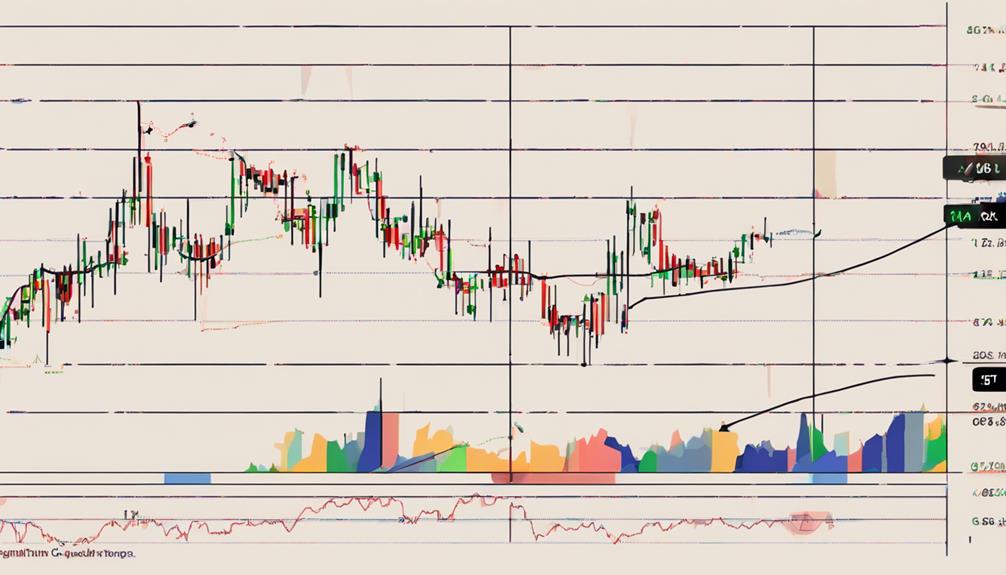
When day trading with RSI, focus on utilizing short-term RSI settings like 9 periods for intraday opportunities. RSI assists day traders in pinpointing overbought and oversold conditions during the trading day, enabling swift entry and exit based on short-term price movements.
Combining RSI with other indicators is common among day traders to confirm signals and improve trading decisions. Adjusting RSI parameters for day trading can enhance responsiveness to rapid market changes, leading to increased trading accuracy.
Frequently Asked Questions
How Can I Improve My RSI Indicator?
To improve your RSI indicator, adjust its period settings based on your trading style. Combine RSI with other indicators for better signals. Backtest various parameter configurations. Use RSI with price action analysis. Experiment with overlaying multiple RSI periods for confirmation.
What Is the 14 RSI Strategy?
To understand the 14 RSI strategy, watch for RSI levels above 70 for potential overbought signs and below 30 for possible oversold indications. By applying this method, you can analyze market trends for trading decisions effectively.
What Is the 5 Star RSI Strategy?
Identify market conditions with precision using the 5 Star RSI Strategy, which combines RSI with other indicators for robust signals. Enhance trading performance by incorporating RSI insights into your plan for informed decision-making.
What Is the RSI 3 Strategy?
When trading with RSI 3 strategy, you'll spot extreme market conditions swiftly, akin to a hawk's sharp vision. Stay alert for rapid price shifts; monitor price action and RSI levels diligently for precise entries and exits.
Conclusion
Incorporating RSI into your trading strategy is like adding rocket fuel to your trades. By fine-tuning RSI settings, combining it with other technical tools, and mastering RSI signals, you can take your trading to the next level.
With practice and proper risk management, you'll be unstoppable in the market. So go ahead, implement these tips and watch your trading performance soar to new heights!
